 W
WArbeit macht frei is a German phrase meaning "Work sets you free" or "Work makes one free". The slogan is known for appearing on the entrance of Auschwitz and other Nazi concentration camps.
 W
WArbeitseinsatz was a forced labour category of internment within Nazi Germany during World War II. When German men were called up for military service, Nazi German authorities rounded up civilians to fill in the vacancies and to expand manufacturing operations. Some labourers came from Germany but exponentially more from roundups (łapanka) in the German-occupied territories. Arbeitseinsatz was not restricted to the industry sector and to arms producing factories; it also took place, for example, in the farming sector, community services, and even in the churches.
 W
WArbeitslager is a German language word which means labor camp. Under Nazism, the German government used forced labor extensively, starting in the 1930s but most especially during World War II. Another term was Zwangsarbeitslager.
 W
WThe Aso Mining forced labour controversy concerns the use of Allied prisoners of war (POW) and Korean conscripts as labourers for the Aso Mining Company in Japan during World War II. Surviving labourers and other records confirmed that the prisoners and conscripts were forced to work in harsh, brutal conditions for little-to-no pay and that some died, at least in part, because of the ill-treatment at the mine.
 W
WDuring World War II, Nazi birthing centres for foreign workers, known in German as Ausländerkinder-Pflegestätte, Ostarbeiterkinderpflegestätten, or Säuglingsheim were German institutions used as stations for abandoned infants, Nazi Party facilities established in the heartland of Nazi Germany for the so-called 'troublesome' babies according to Himmler's decree, the offspring born to foreign women and girls servicing the German war economy, including Polish and Eastern European female forced labour. The babies and children, most of them resulting from rape at the place of enslavement, were abducted en masse between 1943 and 1945. At some locations, up to 90 percent of infants died a torturous death due to calculated neglect.
 W
WBaudienst, full name in German Baudienst im Generalgouvernement, was a forced labour organization created by Nazi Germany in the General Government territory of occupied Poland during World War II. Baudienst was subordinate to the Reichsarbeitsdienst.
 W
WIn World War II, Nazi Germany established brothels in the concentration camps (Lagerbordell) to create an incentive for prisoners to collaborate, although these institutions were used mostly by Kapos, "prisoner functionaries" and the criminal element, because regular inmates, penniless and emaciated, were usually too debilitated and wary of exposure to Schutzstaffel (SS) schemes. In the end, the camp brothels did not produce any noticeable increase in the prisoners' work productivity levels, but instead, created a market for coupons among the camp VIPs.
 W
WThe deportation of Germans from Romania after World War II, conducted on Soviet order early in 1945, uprooted 60,000 to 75,000 of Romania's Germans to the USSR; at least 3,000 of the deportees died before release. The deportation was part of the Soviet plan for German war reparations in the form of forced labor, according to the 1944 secret Soviet Order 7161. Most of the survivors returned to Romania between late 1945 and 1952, with a smaller part settling in different parts of Germany.
 W
WDeutsche Wirtschaftsbetriebe, abbreviated DWB, was a project launched by Nazi Germany in World War II. Organised and managed by the Allgemeine SS, its aim was to profit from the use of slave labour extracted from the Nazi concentration camp inmates.
 W
WThe Dora Trial, also the "Dora"-Nordhausen or Dachau Dora Proceeding was a war crimes trial conducted by the United States Army in the aftermath of the collapse of the Third Reich. It took place between August 7 and December 30, 1947 on the site of the former Dachau concentration camp, Germany.
 W
WDurchgangsstrasse IV was a road constructed by Nazi Germany in occupied Ukraine during World War II. It was a strategic military road to supply the southern sector of the Eastern Front. The large scale constructions works started in early 1942 to support the German advance towards Stalingrad. It ran for over 2,000 kilometres (1,200 mi) from Lviv east to Stalino. Organisation Todt was responsible for the construction which was sub-contracted to several private construction firms. It was constructed by forced laborers – Soviet prisoners of war, local civilians, and Jews – who were procured by the SS and guarded by the Schutzmannschaft battalions. One of the largest forced labor projects undertaken by Nazi Germany that involved Jewish labor, it marked a transition between using Jews as forced laborers to the practice of "extermination through labour".
 W
WForced labor was an important and ubiquitous aspect of the Nazi concentration camps which operated in Nazi Germany and German-occupied Europe between 1933 and 1945. It was the harshest and most inhumane part of a larger system of forced labor in Nazi Germany.
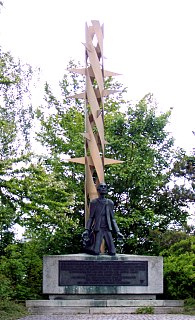 W
WIn the years following World War II, large numbers of German civilians and captured soldiers were forced into labor by the Allied forces. The topic of using Germans as forced labor for reparations was first broached at the Tehran conference in 1943, where Soviet premier Joseph Stalin demanded 4,000,000 German workers.
 W
WForced labor of Germans in the Soviet Union was considered by the Soviet Union to be part of German war reparations for the damage inflicted by Nazi Germany on the Soviet Union during the Axis-Soviet campaigns (1941-1945) of World War II. Soviet authorities deported German civilians from Germany and Eastern Europe to the USSR after World War II as forced laborers, while ethnic Germans living in the USSR were deported during World War II and conscripted for forced labor. German prisoners of war were also used as a source of forced labor during and after the war by the Soviet Union and by the Western Allies.
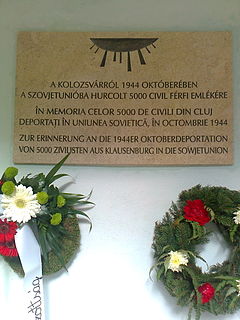 W
WThe forced labor of Hungarians in the Soviet Union in the aftermath of World War II was not researched until the fall of Communism and the dissolution of the Soviet Union. While exact numbers are not known, it is estimated that up to 600,000 Hungarians were deported, including an estimated 200,000 civilians. An estimated 200,000 perished. Hungarian forced labor was part of a larger system of foreign forced labor in the Soviet Union.
 W
WThe use of slave and forced labour in Nazi Germany and throughout German-occupied Europe during World War II took place on an unprecedented scale. It was a vital part of the German economic exploitation of conquered territories. It also contributed to the mass extermination of populations in occupied Europe. The Germans abducted approximately 12 million people from almost twenty European countries; about two thirds came from Central Europe and Eastern Europe. Many workers died as a result of their living conditions – extreme mistreatment, severe malnutrition, and worse tortures were the main causes of death. Many more became civilian casualties from enemy (Allied) bombing and shelling of their workplaces throughout the war. At its peak the forced labourers constituted 20% of the German work force. Counting deaths and turnover, about 15 million men and women were forced labourers at one point during the war.
 W
WMilitary brothels were set up by Nazi Germany during World War II throughout much of occupied Europe for the use of Wehrmacht and SS soldiers. These brothels were generally new creations, but in the West, they were sometimes set up using existing brothels as well as many other buildings. Until 1942, there were around 500 military brothels of this kind in German-occupied Europe. Often operating in confiscated hotels and guarded by the Wehrmacht, these facilities served travelling soldiers and those withdrawn from the front. According to records, at least 34,140 European women were forced to serve as prostitutes during the German occupation of their own countries along with female prisoners of concentration camp brothels. In many cases in Eastern Europe, teenage girls and women were kidnapped on the streets of occupied cities during German military and police round ups called łapanka in Polish or rafle in French.
 W
WApproximately three million German prisoners of war were captured by the Soviet Union during World War II, most of them during the great advances of the Red Army in the last year of the war. The POWs were employed as forced labor in the Soviet wartime economy and post-war reconstruction. By 1950 almost all surviving POWs had been released, with the last prisoner returning from the USSR in 1956. According to Soviet records 381,067 German Wehrmacht POWs died in NKVD camps. According to German historian Rüdiger Overmans ca. 3,000,000 POW were taken by the USSR; he put the "maximum" number of German POW deaths in Soviet hands at 1.0 million. Based on his research, Overmans believes that the deaths of 363,000 POWs in Soviet captivity can be confirmed by the files of Deutsche Dienststelle (WASt), and additionally maintains that "It seems entirely plausible, while not provable, that 700,000 German military personnel listed as missing actually died in Soviet custody."
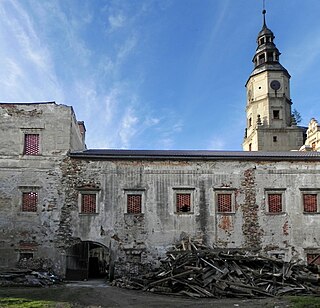 W
WThe Grafenort concentration camp — as treated in the present article — is a conventional name for three separate Nazi concentration camps that functioned in the village of Grafenort on the territory of Nazi Germany during the Second World War.The first of them is the all-female Arbeitslager or slave-labour that functioned only in 1945 as a subcamp of Gross-Rosen, whose detainees were exclusively Jewish women deported from Poland. The second is
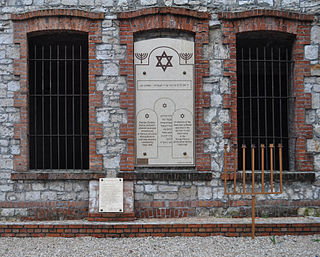 W
WHASAG was a German metal goods manufacturer founded in 1863. Based in Leipzig, it grew from a small business making lamps and other small metal products by hand into a large factory and publicly traded company that sold its wares in several countries. During the Second World War, Hasag became a Nazi arms-manufacturing conglomerate with dozens of factories across German-occupied Europe using slave labour on a massive scale. Tens of thousands of Jews from Poland, and other prisoners, died producing munition for Hasag.
 W
W"Italian Military Internees" was the official name given by Germany to the Italian soldiers captured, rounded up and deported in the territories of Nazi Germany in Operation Achse in the days immediately following the World War II armistice between Italy and Allied armed forces.
 W
WThe Jägerstab was a Nazi German governmental task force whose aim was to increase production of fighter aircraft during World War II. Established in March 1944, it was composed of government and SS personnel, as well as representatives of the aircraft manufacturers. The task force played a key role in the Emergency Fighter Program, including the "people's fighter" Heinkel He 162.
 W
WAfter World War II there were from 560,000 to 760,000 Japanese personnel in the Soviet Union and Mongolia interned to work in labor camps as POWs. Of them, it is estimated that between 60,000 and 347,000 died in captivity.
 W
WAlfried Felix Alwyn Krupp von Bohlen und Halbach, often referred to as Alfried Krupp, was a German industrialist, a competitor in Olympic yacht races, and a member of the Krupp family, which has been prominent in German industry since the early 19th century. He was convicted after World War II of crimes against humanity for the genocidal manner in which he operated his factories ; served three years in prison until being pardoned.
 W
WŁapanka was the Polish name for a World War II practice in German-occupied Poland, whereby the German SS, Wehrmacht and Gestapo rounded up civilians on the streets of Polish cities. The civilians to be arrested were in most cases chosen at random from among passers-by or inhabitants of city quarters surrounded by German forces prior to the action.
 W
WMittelbau-Dora was a Nazi concentration camp located near Nordhausen in Thuringia, Germany. It was established in late summer 1943 as a subcamp of Buchenwald concentration camp, supplying slave labour from many Eastern countries occupied by Germany, for extending the nearby tunnels in the Kohnstein and for manufacturing the V-2 rocket and the V-1 flying bomb. In the summer of 1944, Mittelbau became an independent concentration camp with numerous subcamps of its own. In 1945, most of the surviving inmates were sent on death marches or crammed in trains of box-cars by the SS. On 11 April 1945, US troops freed the remaining prisoners.
 W
WMittelwerk was a German World War II factory built underground in the Kohnstein to avoid Allied bombing. It used slave labor from the Mittelbau-Dora concentration camp to produce V-2 ballistic missiles, V-1 flying bombs, and other weapons.
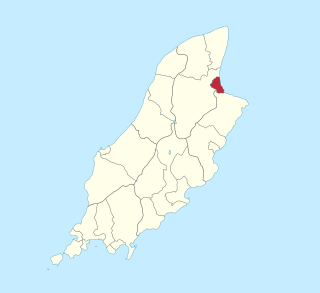 W
WMooragh Camp was a World War II internment camp in Ramsey, Isle of Man, in operation from May 1940 until September 1945. It was the first such camp on the island since World War I.
 W
WOstarbeiter was a Nazi German designation for foreign slave workers gathered from occupied Central and Eastern Europe to perform forced labor in Germany during World War II. The Germans started deporting civilians at the beginning of the war and began doing so at unprecedented levels following Operation Barbarossa in 1941. They apprehended Ostarbeiter from the newly-formed German districts of Reichskommissariat Ukraine, District of Galicia, and Reichskommissariat Ostland. These areas comprised German-occupied Poland and the conquered territories of the Soviet Union. According to Pavel Polian, over 50% of Ostarbeiters were formerly Soviet subjects originating from the territory of modern-day Ukraine, followed by Polish women workers. Eastern workers included ethnic Ukrainians, Poles, Belarusians, Russians, Armenians, Tatars, and others. Estimates of the number of Ostarbeiter range between 3 million and 5.5 million.
 W
WThe "P" symbol or "P" badge was introduced on 8 March 1940 by the Nazi Germany General Government with relation to the requirement that Polish workers (Zivilarbeiter) used during World War II as forced laborers in Germany display a visible symbol marking their ethnic origin. The symbol was introduced with the intent to be used as a cloth patch, which indeed was the most common form, but also reproduced on documents and posters. The badge was intended to be humiliating, and like the similar Jewish symbol, can be seen as a badge of shame.
 W
WPolish decrees, Polish directives or decrees on Poles were the decrees of the Nazi Germany government announced on 8 March 1940 during World War II to regulate the working and living conditions of the Polish workers (Zivilarbeiter) used during World War II as forced laborers in Germany. The regulation intentionally supported and even created anti-Polish racism and discrimination on the grounds of ethnicity and racial background.
 W
WThe law of August 22, 1950, establishing the status of “recusant”, stated in its first article: "The Republic, grateful to those who accepted all the risks in their fight against the enemy's war potential, considering the suffering and the prejudice that this courageous and patriotic attitude caused them, proclaimed and determined the right to reparation for recusants and their successors.
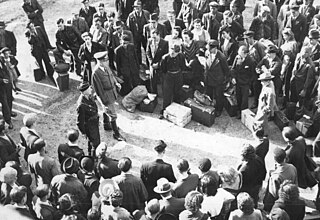 W
WThe Service du travail obligatoire was the forced enlistment and deportation of hundreds of thousands of French workers to Nazi Germany to work as forced labour for the German war effort during World War II.
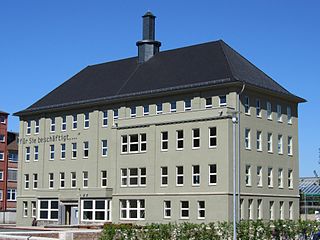 W
WJ.A. Topf and Sons was an engineering company, founded in 1878 in Erfurt, Germany by Johannes Andreas Topf (1816–1891). Originally, it made heating systems and brewing and malting equipment. Later, the company diversified into silos, chimneys, incinerators for burning municipal waste, and crematoria. During World War I it made weapons shells, limbers and other military vehicles. In World War II it also made weapons shells and aircraft parts for the Luftwaffe.
 W
WIn 1944 the Third Reich began work on the construction of a partially underground bunker factory codenamed Weingut I in the forest known as the Mühldorfer Hart, slightly to the west of Mühldorf am Inn in Upper Bavaria. Plans for the bunker called for a massive reinforced concrete barrel vault composed of 12 arch sections under which Messerschmitt Me 262 jet engines would be manufactured in a nine-storey factory.
 W
WZivilarbeiter refers primarily to ethnic Polish residents from the General Government, used during World War II as forced laborers in the Third Reich.